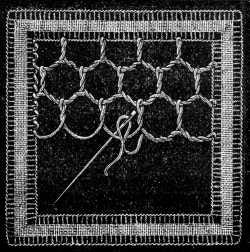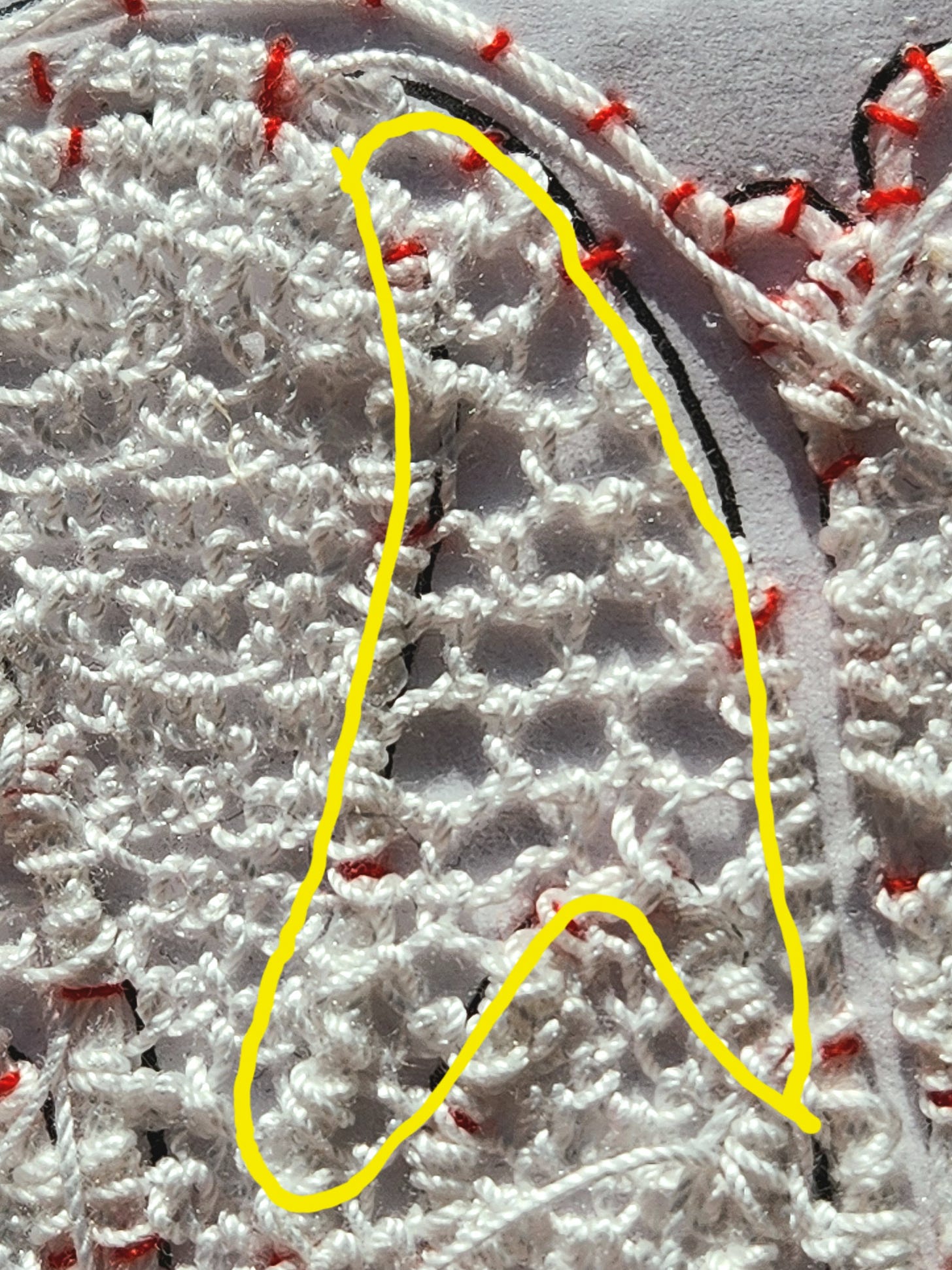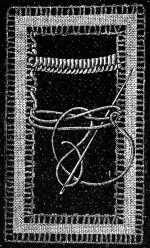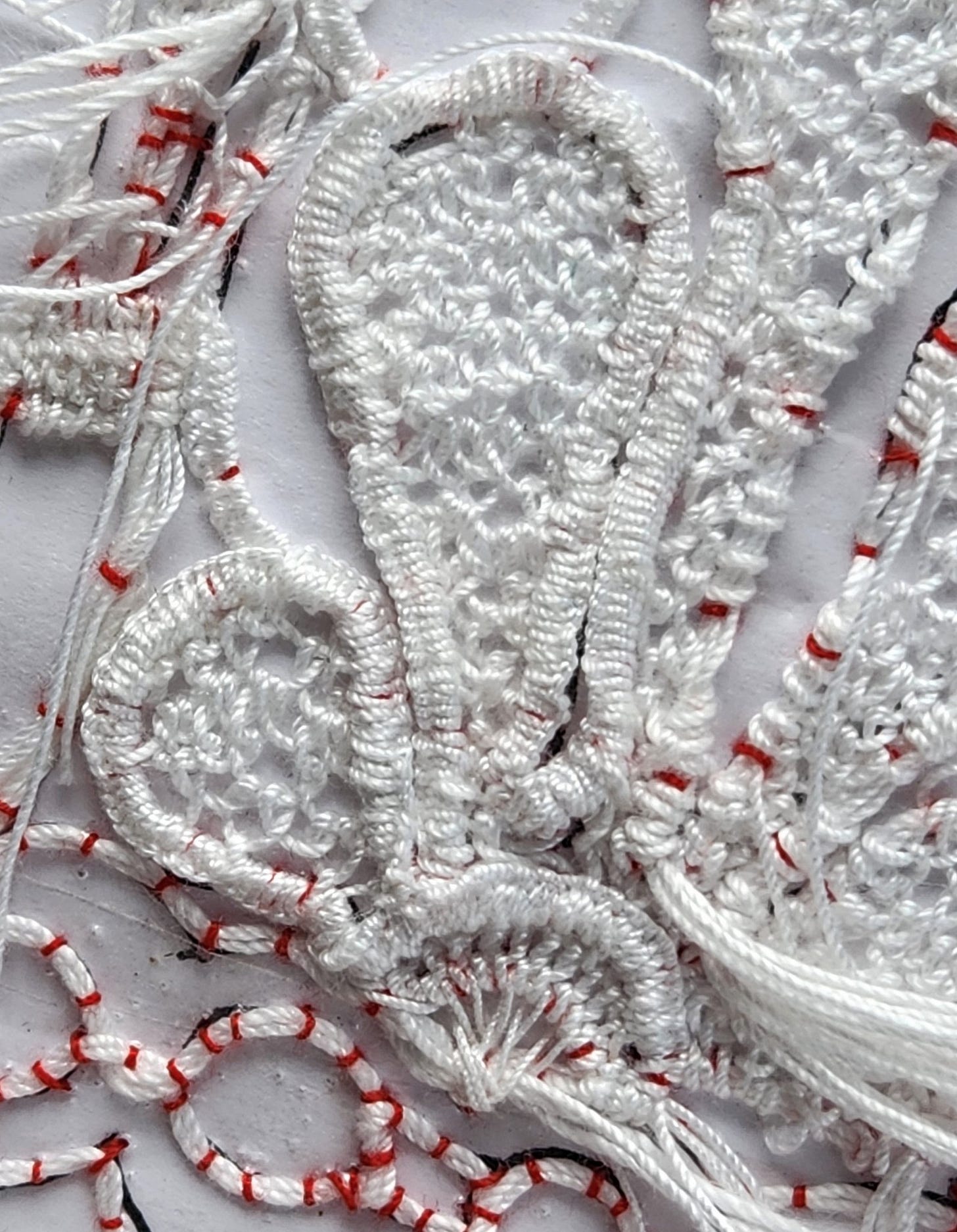Over the past month or so, I tried my hand at a new stitch... and let's say it didn’t go great. I love the look of the Greek net stitch and thought it would be airy enough while still adding some needed structure to my piece.
My first attempts at the double twisted buttonhole portion of the Greek Net Stitch ended up producing knots (like the kind you tie at the end of your sewing thread). So I gave up on that and stuck with a normal buttonhole and looped the thread back through those.
The first patch I stitched turned out alright, even if it wasn't technically correct! It was close enough to what it was supposed to look like that I was satisfied, although it was not as airy and light of a stitch as I was hoping for.
Then I went to do the next patch on the other side. Things quickly went awry when I forgot which direction I was working my stitch and did several rows backward, oops! Picked that out and re-did it the correct direction... still didn't match the first side?
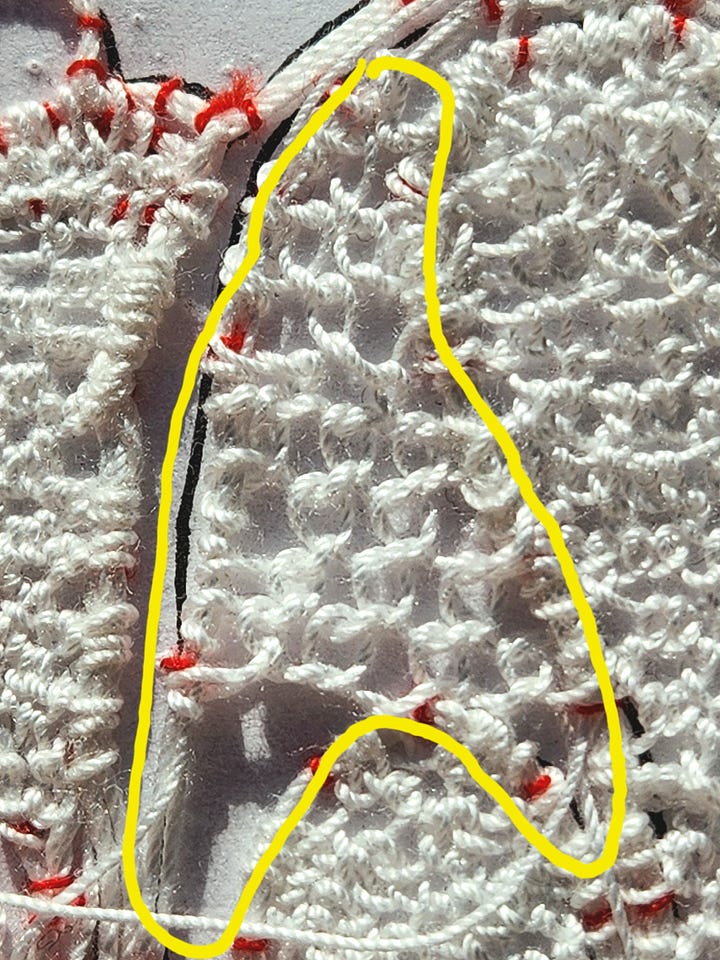
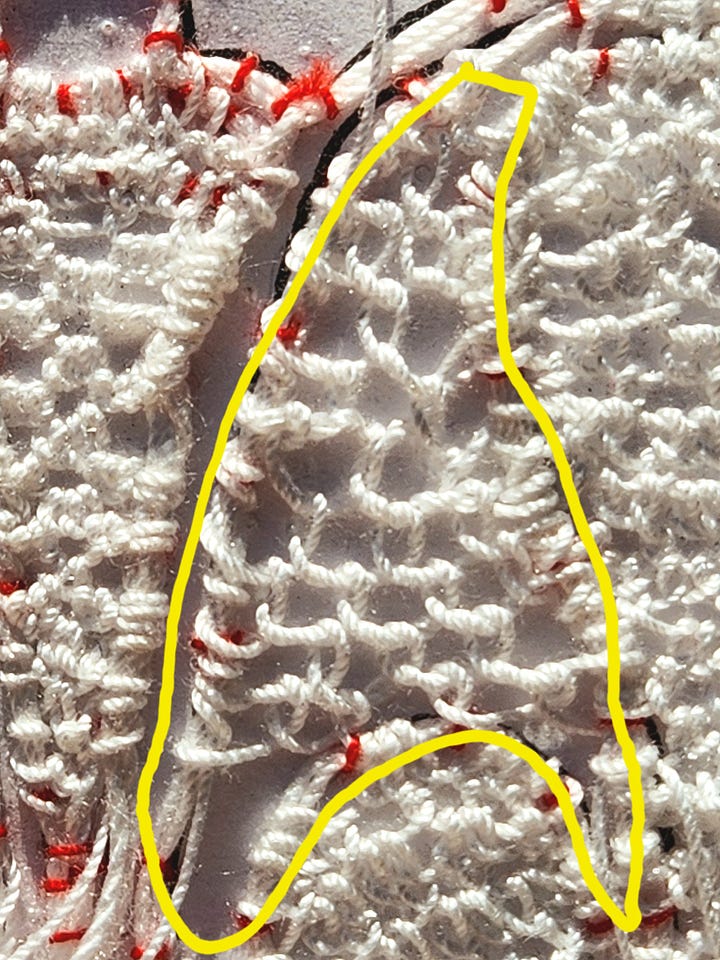
Add to all of this the fact that I was already a bit disappointed with the look of a stitch around the petals, I started to debate pulling it all out and switching to bars. The stitching around the petals made them blend in too much. It was much more dense than what I had in my head. Bars would give it the structure to stay in place while leaving much more negative space.
I threw my dilemmas onto Tumblr and some amazing lace makers came to my rescue. I knew I wasn’t doing the stitch correctly, but they were able to explain why my adaptation wasn’t working and how to successfully complete the Greek net stitch. To see their amazing work head over to this post.
But, even with this help and newfound understanding of the stitch, I still wasn’t happy with how having stitches in the space between petals looked. I pulled out my snips and went to town cutting out my mistakes. When I saw the petals without the stitches around them I knew I had to change paths.
The petals felt like they could breathe again, and I decided to add bars. Since I didn’t lay the bars as part of the initial cordonnet, I had to add them. Luckily this is pretty easy and I used this diagram to add the bars in.
I stuck with a simple buttonhole covering. The piece has a lot of texture all ready and I want the focus to be on the central design. Since the whole cordonnet gets buttonholed, the bars will blend right in.
I also added a plain Russian stitch in between the two outer rings of the cordonnet.

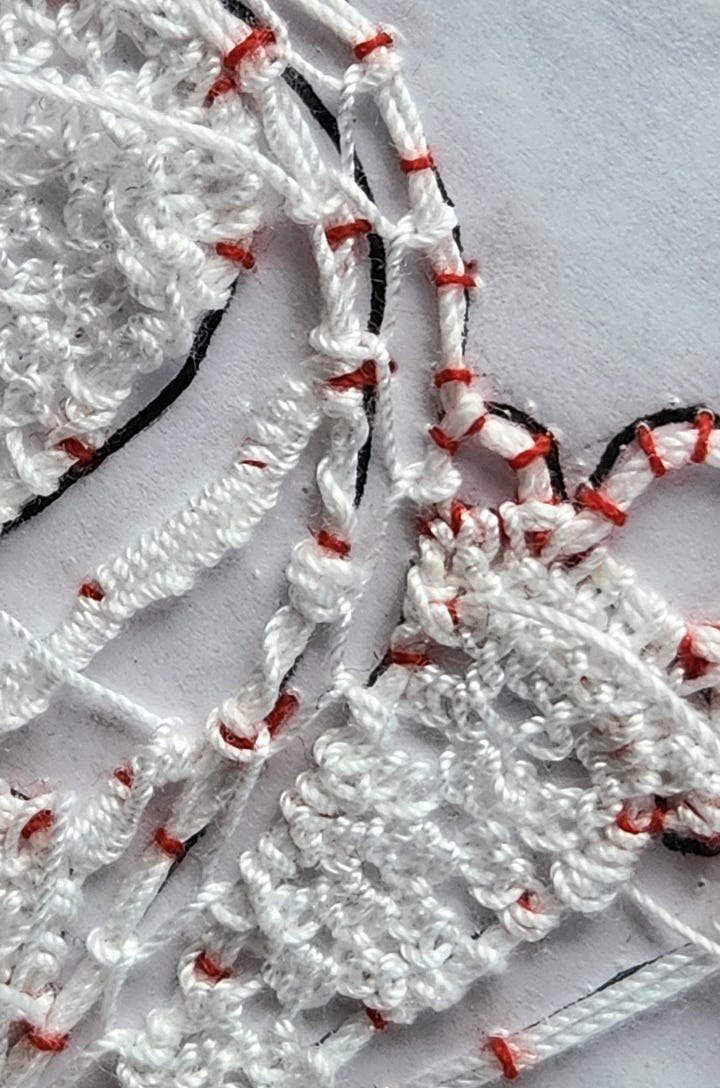
The loose ends were starting to get out of control, making it frustrating to work. I started to buttonhole the cordonnet on the filled petals, which were the culprits of most loose ends. This part is my favorite. It’s quick, satisfying, and adds so much dimension and clarity.
It was frustrating to keep getting the Greek net stitch wrong and needing to cut out a month’s worth of work was not a great feeling. I took a few days between getting Tumblr help and committing to the snip to let myself recalibrate and come to terms with ‘losing progress’. However, the difference it made in the piece made it all worth it.
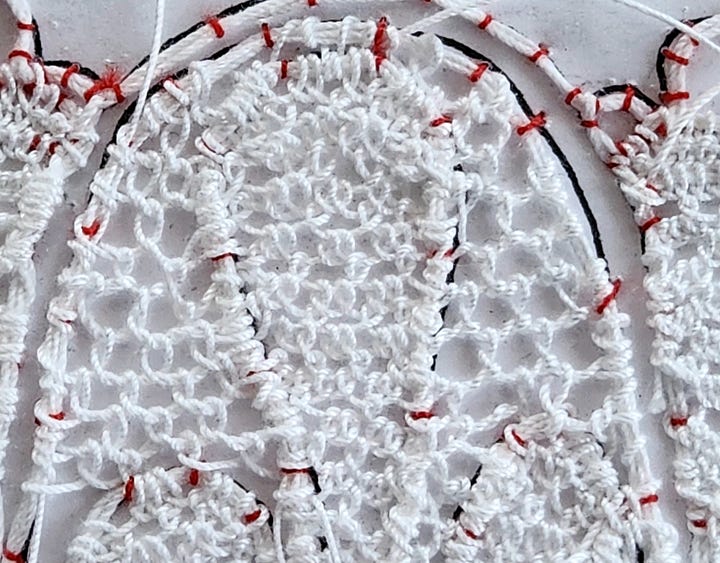

I tend to be a perfectionist in life, but documenting my lace learning journey has taught me to be okay with making mistakes in my work, and to reach out for help when it is out of my depth (I will still complain about it though). Thankfully I have a great community to turn to when needed. I am much happier with the piece now that I am on the other side of the hard decisions and have walked away with a better understanding of my craft.




